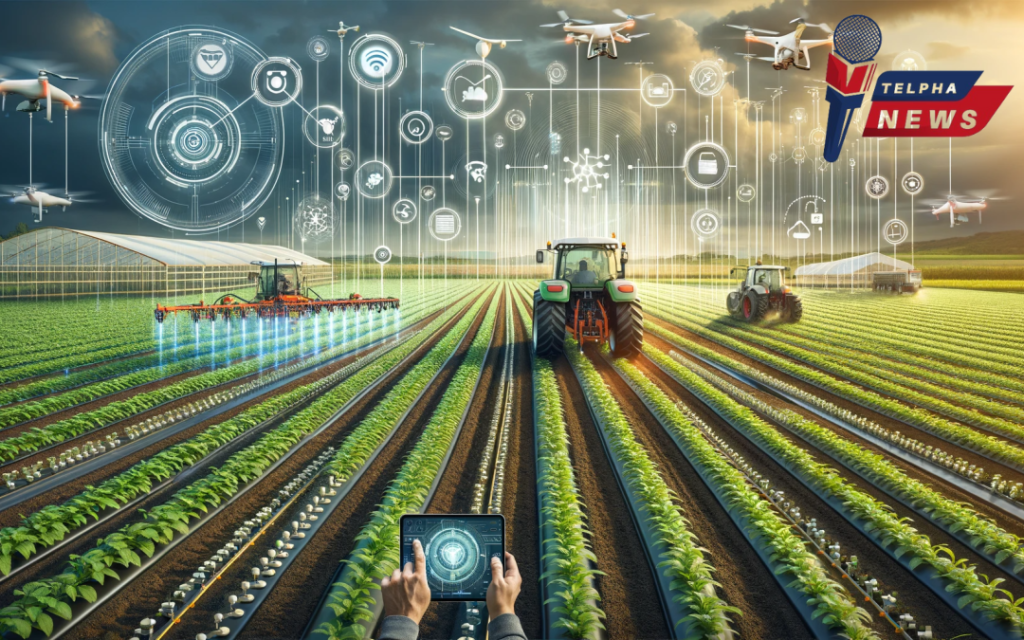Agriculture, once described by McKinsey analysts as one of the least digitized industries globally, is undergoing a significant transformation. While many industries have embraced technological advancements, farming has often been perceived as static, changing little over millennia. However, this view is rapidly becoming outdated. Digital technologies are beginning to revolutionize agriculture, enhancing productivity, sustainability, and efficiency. Here, we explore the top 10 digital technologies driving this transformation.

1. Robotics: The New Farmhands
Modern agriculture is increasingly relying on robotics to handle tasks traditionally performed by human labor. Robots are now milking cows, picking strawberries, and processing carcasses in plants. The global market for agricultural robotics is already over $5 billion and is expected to double in the next five years. This shift not only reduces labor costs but also increases precision and efficiency in farm operations.
2. IoT and Sensors: Real-Time Farm Monitoring
The Internet of Things (IoT) and sensor technology are pivotal in modern farming. These technologies enable real-time tracking of produce and livestock, detection of health issues, and environmental monitoring. By providing accurate data on soil moisture, crop health, and livestock conditions, IoT and sensors help farmers make informed decisions, addressing challenges related to climate, sustainability, and food supply chain transparency.
3. Artificial Intelligence (AI): Enhancing Decision-Making
AI is transforming how farming decisions are made by minimizing human error and cognitive biases. AI applications range from predictive analytics to automated farming equipment. By analyzing large datasets, AI provides actionable insights that enhance crop management, pest control, and yield predictions. While AI may change traditional roles within agriculture, it ultimately enhances efficiency and accuracy.
4. 3-D Printing: On-Demand Solutions
3-D printing technology is proving invaluable in agriculture. From repairing machinery to printing food and creating prosthetics for animals, 3-D printing offers practical solutions that save time and money. This technology is especially beneficial in areas with supply chain challenges, such as during the Covid-19 pandemic or in remote regions.
5. Drones: Eyes in the Sky
Drones are revolutionizing agricultural surveillance. They are used to monitor large fields, assess crop health, and optimize the application of fertilizers and pesticides. In China, drones already survey 20 million hectares of cotton crops. The aerial perspective provided by drones offers insights that are difficult to obtain from the ground, enhancing pest management and irrigation efficiency.
6. Extended Reality (XR) and the Metaverse: Beyond the Visible Spectrum
Extended Reality (XR) and the Metaverse are opening new frontiers in agriculture. XR allows farmers to see beyond the visible spectrum, providing insights into crop health and soil conditions. This technology also improves food safety practices and enhances the management of crops and livestock.
7. Virtual Reality (VR): Immersive Learning and Engagement
VR technology offers immersive experiences for education and training in agriculture. Students can learn about animal anatomy and plant growth without traditional methods. VR also allows consumers to virtually visit farms, fostering a deeper connection to food production. Successful applications of VR include projects in the U.K. poultry industry and McDonald’s U.K. consumer education.
8. Blockchain: Ensuring Transparency
Blockchain technology, often associated with Bitcoin, holds immense potential for agriculture. It provides transparency in the food supply chain, addressing consumer concerns about food provenance and safety. Blockchain applications are already in use in the beer supply chain in Canada, Walmart’s global food chain, and the FDA, enhancing trust and accountability.
9. Data Analytics: Unlocking Insights
Data analytics is crucial in modern agriculture. With the world expected to store 175 zettabytes of data by 2025, the ability to capture, control, and process data is invaluable. Data analytics helps farmers optimize operations, predict trends, and make data-driven decisions. It is a powerful tool for unlocking new insights and improving agricultural efficiency.
10. Cloud Connectivity: Bridging the Digital Divide
Cloud-based computing services offer flexible resources and economies of scale, essential for modern farming. Real-time internet connections enable better data management and accessibility. However, connectivity remains a challenge, especially in rural areas. Addressing this issue is vital for the continued digital transformation of agriculture, ensuring that farmers can leverage these technologies to their full potential.
Conclusion
The agricultural sector is on the cusp of a digital revolution. The integration of these technologies promises to enhance productivity, sustainability, and food safety. As we embrace these advancements, the traditional image of farming is evolving, paving the way for a more efficient and innovative future. By leveraging robotics, IoT, AI, and other digital tools, agriculture can meet the demands of a growing population while promoting environmental stewardship. The future of farming is digital, and it is already here.